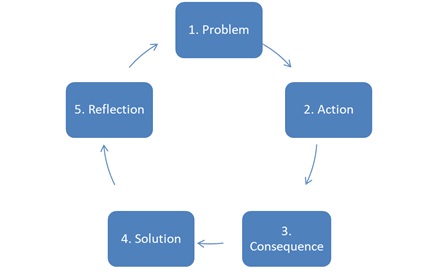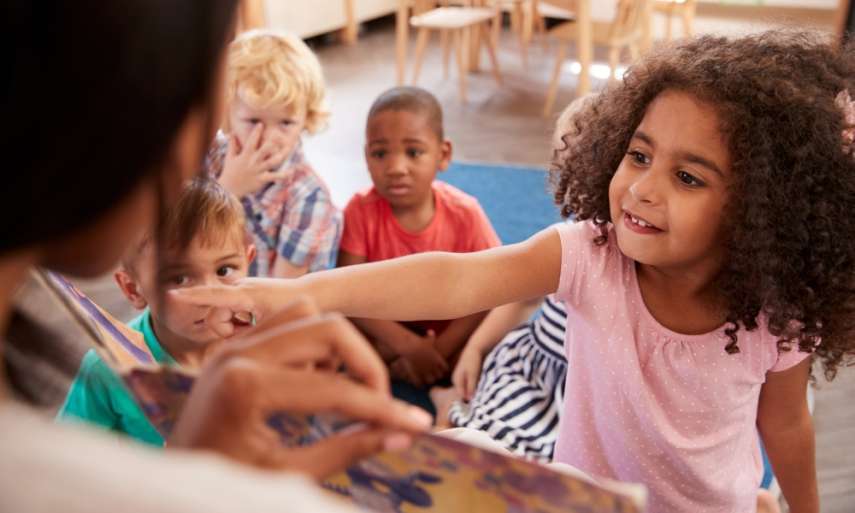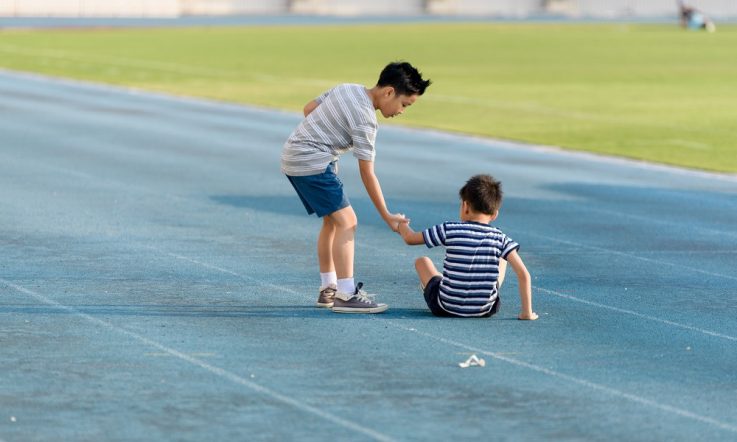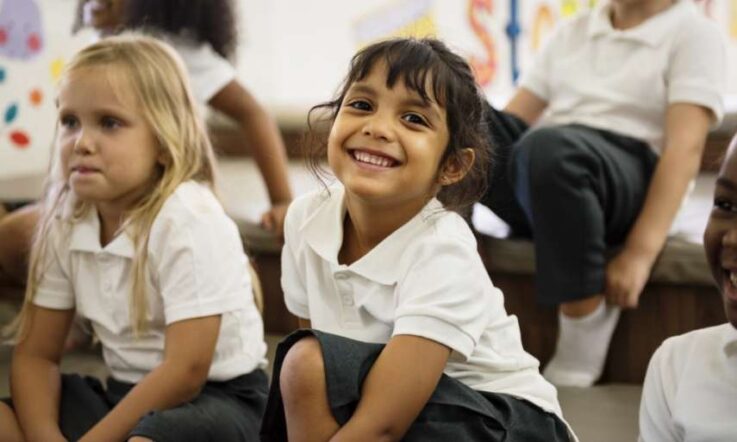Dr Sarah Tillott is a lecturer at the University of Wollongong and CEO of the School for Living, a resilience-based organisation that creates resources targeted at children aged three to eight years. Over a three-part series for Teacher, Tillott has been exploring resilience theory and the adaptive and maladaptive traits of resilience in children. In the final instalment, Tillott and co-author Dr Michelle Neumann, a Senior Lecturer and Researcher in the School of Education and Professional Studies at Griffith University, discuss the practical application of resilience in the classroom.
Teachers play a key role in supporting children’s social and emotional development at school. Providing a diverse range of learning activities in the classroom that focus on developing strong resilience skills early in life, set children up with the characteristics needed to cope in challenging situations and rise up confidently to deal with obstacles, overcome them, recover, and move forward.
Signs of a resilient child include confidence, motivation to keep going, positive self-identity and self-concept, sense of humour, copes in adverse situations, asks for help, completes goals, shares feelings with others, helps and connects with others, and is empathetic (Goldman, 2004).
Key resilience skills
Key resilience skills that teachers can help children practise and develop in the classroom are:
- Empathy and positive relationships with others
- Sense of responsibility
- Self-management of emotions
- Problem solving skills
Classroom activities such as shared storybook reading, readers’ theatre, memory boxes, creative writing, writing letters and poetry, and games can all be used to help support these four key resilience skills. These activities also have the benefit of supporting literacy and language skills.
Through careful reflection, design and planning of daily learning activities, teachers can identify opportunities for teaching resilience in their classroom. This approach will provide not only rich experiences for social and emotional learning for children, but also cognitive learning.
Learning activities to foster resilience
Here are practical examples of how the key resilience skills can be fostered through four different learning activities.
Positive relationships with others
Writing letters: Pair children up with someone in their class that they do not know. Ask them to choose someone outside their usual friendship group. Without speaking to that person they write a letter (this can be done using traditional paper and pencil or via an email) to their new friend that has some fun facts about themselves and also asks questions about what the other person’s interests are (e.g., hobbies, where they like to go on holidays, and what their favourite food is). Each pair of children then write a response letter. Later, the pair can meet and talk in person about a topic or interest they have in common based on their letters. This activity can support social communication and build new friendships.
Self-management of emotions
Memory boxes: Ask children to create their own memory box and collect memorable items from home. A memory box is a container (such as a shoebox) to store special items that are of interest to or belong to an individual child – these could be photos of family members, babies, pets, pictures, souvenirs, letters, cards, messages, gifts, toys or memorabilia. The objects or messages help children remember loved ones, happy, sad and fun times. In small groups children can share an item from their memory box. This type of activity can help children share their own stories, which evokes discussion and exploration of different emotions whilst listening to other’s experiences. The turn-taking and listening aspect of the shared experience can help build self-management skills.
Sense of responsibility
Reader’s theatre: Reader’s theatre uses scripts, drama and roleplay to produce and present an entertaining performance to peers. Children work collaboratively in small groups to practise their character’s lines from a script given to them by the teacher or one they have created themselves. The need for children to say their script at the right time and practise collaboratively with their group builds a sense of responsibility to their team (i.e., not letting others down). Reader’s theatre also supports social communication skills and the opportunity to imagine different emotions and feelings and view situations from other’s perspectives.
Problem-solving skills
Shared storybook reading: Shared reading of quality picture books is an activity that can help support not only comprehension and vocabulary skills but also social emotional skills. Storybooks that have been specifically designed to support resilience through a narrative storyline that has a conflict situation that needs solving can help support the development of problem-solving skills in challenging or stressful situations. Using Tillott’s Game ON storybook [see below] as an example, following reading the book, the teacher could ask the children these questions: How do you think Alex (the angry character) is affecting other characters in the book? (Awareness); Can you remember a time when your behaviour was like Alex? (Problem); 3) Can you tell me what happened when you behaved like this? (Action/Consequence); 4) Now that you have read the book, how do you think you could change the behaviour? (Solution/Reflection).
Game ON in the classroom
Game ON is the title of the first book in Tillott’s Dusty and Friends resilience series. Through a series of purpose-built, relatable characters, Game ON unpacks resilience theory by addressing effective conflict resolution and anger management strategies, using adaptive resilience tools that support the development and function of metacognition.
Game ON was written for children aged four to seven years, and can be used in conjunction with a complementary program to engage children in a range of activities such as storytelling, roleplay, and puppetry. The program encourages teachers to unpack the core theoretical underpinnings of resilience theory.
Between 2015 and 2018, a trial of the Game ON program was deployed across three public schools in New South Wales, with children in Kindergarten to Year 2. The study evaluated Game ON and its capacity to provide positive learning opportunities for children to understand resilience and reflect on their behaviour. The results indicate that Game ON – in conjunction with education and training – has the capacity to achieve resilience-based behaviour change in children.
The program emphasises the importance of developing autonomy, and encouraging children to take responsibility when required. In the trial, children demonstrated effective decision-making skills by assessing or predicting consequences associated with specific actions and by exhibiting positive communication in their dialogue.
Reflection and behaviour change
Embedded in the narrative of all three books across the Dusty and Friends series is Gibbs’ reflective cycle (Gibbs, 1988). A modified version (Figure 1) of the cycle has been integrated in the story to encourage reflection.

Figure 1: Modified, child-friendly, version of the Gibbs’ reflective cycle.
The story characters are challenged through a scenario involving a problem, followed by the actions, consequences and solutions. Reflecting on the characters’ challenges and responses provides an opportunity for children to evaluate and discuss personal behaviour within a safe, classroom setting and receive constructive feedback from peers about their current choices.
References
Gibbs, G. (1988). Learning by doing: A guide to teaching and learning methods. Oxford, UK: Further Education Unit, Oxford Brookes University.
Goldman, L. (2004). Raising our children to be resilient: A guide to helping children cope with trauma in today's world. Routledge. 10.4324/9780203997253.
The article provides practical examples of how key resilience skills can be fostered through four different learning activities. Try implementing one of these learning activities in your classroom. What was the response from students? Were they engaged in the experience? What were some of the key takeaways? Let us know by leaving a comment below.



